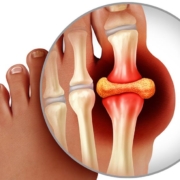5 Essential Healthy Habits for Lifelong MSK Wellness
5 Essential Healthy Habits for Lifelong MSK Wellness
In our fast-paced world, prioritizing our musculoskeletal (MSK) health often takes a backseat. Yet, maintaining strong bones, joints, and muscles is crucial for overall well-being and mobility as we age. In this listicle, we’ll explore five essential healthy habits that can definitely help you cultivate a foundation for lifelong MSK wellness.From simple daily practices to mindful lifestyle choices, each item on our list is designed to empower you with the knowledge and tools to enhance your physical health. Whether you’re looking to prevent discomfort or simply want to feel more agile in your daily life, these habits will guide you on your journey to a healthier, more active future. Let’s dive in!
1) Stay Active: Incorporating regular physical activity into your daily routine is crucial for maintaining musculoskeletal health. Aim for a mix of strength training, flexibility exercises, and aerobic activities to keep your muscles and joints functioning optimally
Engaging in regular physical activity is a cornerstone of musculoskeletal health. By incorporating a variety of exercises into your routine, you can enhance your strength, flexibility, and cardiovascular endurance, all of which play a vital role in keeping your muscles and joints in peak condition. Consider incorporating the following types of activities into your week:
- Strength Training: Aim for at least two sessions a week, focusing on all major muscle groups. This can include weightlifting, resistance bands, or body-weight exercises.
- Flexibility Exercises: Incorporate stretching or yoga to improve your range of motion and reduce stiffness. Aim for at least 10-15 minutes daily.
- Aerobic Activities: Engage in moderate-intensity activities like brisk walking, cycling, or swimming for at least 150 minutes each week to boost cardiovascular health.
To help you visualize a balanced weekly routine, consider the following table that outlines a sample exercise schedule:
| day | Activity | Duration |
|---|---|---|
| Monday | Strength Training | 45 minutes |
| Tuesday | Yoga/Flexibility | 30 minutes |
| Wednesday | Aerobic Activity | 30 minutes |
| Thursday | Strength training | 45 minutes |
| Friday | Rest Day | – |
| Saturday | Aerobic Activity | 60 minutes |
| Sunday | Yoga/Flexibility | 30 minutes |
2) Prioritize Posture: Good posture is essential for preventing strain on your muscles and spine. Be mindful of your alignment whether sitting, standing, or walking, and consider ergonomic adjustments to your workspace to promote a healthier posture throughout the day
Maintaining proper alignment is crucial for your musculoskeletal health, as it helps to alleviate needless strain on your muscles and spine. Whether you’re seated at a desk, standing in line, or strolling through the park, being mindful of your posture can substantially impact your overall well-being. here are some tips to keep your posture in check:
- Sit Smart: Use a chair that supports your lower back and keeps your feet flat on the floor.
- Stand Tall: Distribute your weight evenly on both feet and keep your shoulders relaxed.
- Walk with Purpose: Keep your head up and your chin parallel to the ground to promote a straight spine.
Along with being conscious of your posture, consider making ergonomic adjustments to your workspace. This not only enhances comfort but also fosters a healthier posture throughout your workday. Here’s a simple table illustrating key ergonomic elements to incorporate:
| Ergonomic Element | Recommendation |
|---|---|
| Chair Height | Adjust so your feet rest flat on the floor. |
| Monitor Position | Top of the screen should be at or just below eye level. |
| Keyboard Placement | Keep it at elbow height to avoid strain on your wrists. |
| Mouse Usage | Position it close to the keyboard to minimize arm reach. |
3) Hydrate and Nourish: proper hydration and a balanced diet rich in vitamins and minerals play a vital role in musculoskeletal wellness. Focus on whole foods, including fruits, vegetables, lean proteins, and healthy fats, while ensuring you drink enough water to support joint lubrication and overall health
To maintain optimal musculoskeletal health, it’s essential to prioritize hydration and nutrition. Water is the unsung hero of joint health, acting as a lubricant that keeps your joints moving smoothly. Aim to drink at least eight 8-ounce glasses of water each day, or more if you’re active. Additionally, consider incorporating a variety of whole foods into your diet.These foods not only provide essential nutrients but also promote overall wellness.Focus on the following:
- fruits: Berries, oranges, and bananas are packed with antioxidants and vitamins.
- Vegetables: Leafy greens,bell peppers,and broccoli offer vital minerals and fiber.
- Lean Proteins: Chicken, fish, and legumes help repair and build muscle tissue.
- Healthy Fats: Avocados,nuts,and olive oil support cellular health and reduce inflammation.
To visualize the impact of hydration and nutrition on your musculoskeletal system, consider the following table:
| Food Group | Key Nutrients | Benefits for MSK Health |
|---|---|---|
| Fruits | Vitamins C and A | boosts collagen production for cartilage health |
| Vegetables | Calcium and Magnesium | Strengthens bones and muscles |
| Lean Proteins | Protein and Omega-3s | Supports muscle repair and reduces inflammation |
| Healthy Fats | Monounsaturated fats | Improves joint lubrication and mobility |
By committing to a balanced diet and staying well-hydrated, you not only enhance your musculoskeletal health but also pave the way for a more vibrant and active lifestyle. Remember, your body is a reflection of what you nourish it with, so choose wisely and drink up!
4) Incorporate Rest and Recovery: Allowing your body time to rest and recover is just as important as staying active. Make sure to get adequate sleep, listen to your body when it needs a break, and consider practices like stretching or yoga to enhance recovery and reduce tension
Rest and recovery are essential components of any wellness routine, especially for maintaining musculoskeletal health. Prioritizing sleep is crucial; aim for 7-9 hours of quality sleep each night to allow your body to repair and rejuvenate. During sleep,your muscles relax,and tissue repair processes are activated,promoting overall recovery. Additionally,listening to your body is vital. If you feel fatigued or sore, don’t push through the pain.Instead,give yourself permission to take a break or engage in lighter activities that still promote movement without overexertion.
Incorporating restorative practices into your routine can significantly enhance your recovery. Consider adding stretching or yoga to your weekly schedule. These activities not only improve flexibility but also help to reduce muscle tension and promote relaxation. Here are some effective practices to consider:
- Gentle Yoga: Focus on restorative poses that aid in relaxation.
- Dynamic Stretching: Incorporate stretches that warm up your muscles before activity.
- Foam Rolling: Use a foam roller to alleviate muscle tightness and improve circulation.
- Mindfulness meditation: Pair relaxation with mental wellness to enhance your overall recovery.
5) Manage Stress: Chronic stress can lead to muscle tension and exacerbate pain. Engage in stress-reducing activities such as meditation, deep breathing exercises, or hobbies that bring you joy, helping to keep both your mind and body in harmony for long-term wellness
Chronic stress can be a silent saboteur, tightening muscles and amplifying discomfort. To combat this, it’s essential to incorporate stress-reducing activities into your daily routine. Consider exploring practices like meditation and deep breathing exercises, which can definitely help center your thoughts and calm your mind. these techniques not only enhance your mental clarity but also promote physical relaxation,allowing your muscles to release tension naturally.Additionally, engaging in hobbies that ignite your passion can create a joyful distraction from daily stressors, fostering a sense of fulfillment and balance.
To help you get started, here are some simple yet effective activities to incorporate into your life:
- Mindfulness Meditation: Spend 10 minutes each day focusing on your breath and being present.
- Yoga: Engage in gentle yoga stretches to promote flexibility and release muscle tightness.
- Nature Walks: Take a stroll in nature to boost your mood and reduce anxiety.
- Creative Outlets: Dive into painting, writing, or playing a musical instrument to express yourself.
- Social Connections: Spend time with loved ones to foster a supportive habitat.
Concluding Remarks
As we wrap up our exploration of the five essential healthy habits for lifelong musculoskeletal wellness, it’s clear that nurturing our bodies is a journey, not a destination. By incorporating these practices into your daily routine, you pave the way for a more resilient, flexible, and vibrant life. Remember, every small step counts—whether it’s taking a moment to stretch, choosing nutritious foods, or prioritizing rest, each habit builds upon the last. Embrace these changes with patience and consistency, and watch as they transform not only your physical health but your overall well-being. Here’s to a lifetime of movement, strength, and vitality! Your journey towards MSK wellness starts today—let’s keep it going!










Leave a Reply
Want to join the discussion?Feel free to contribute!